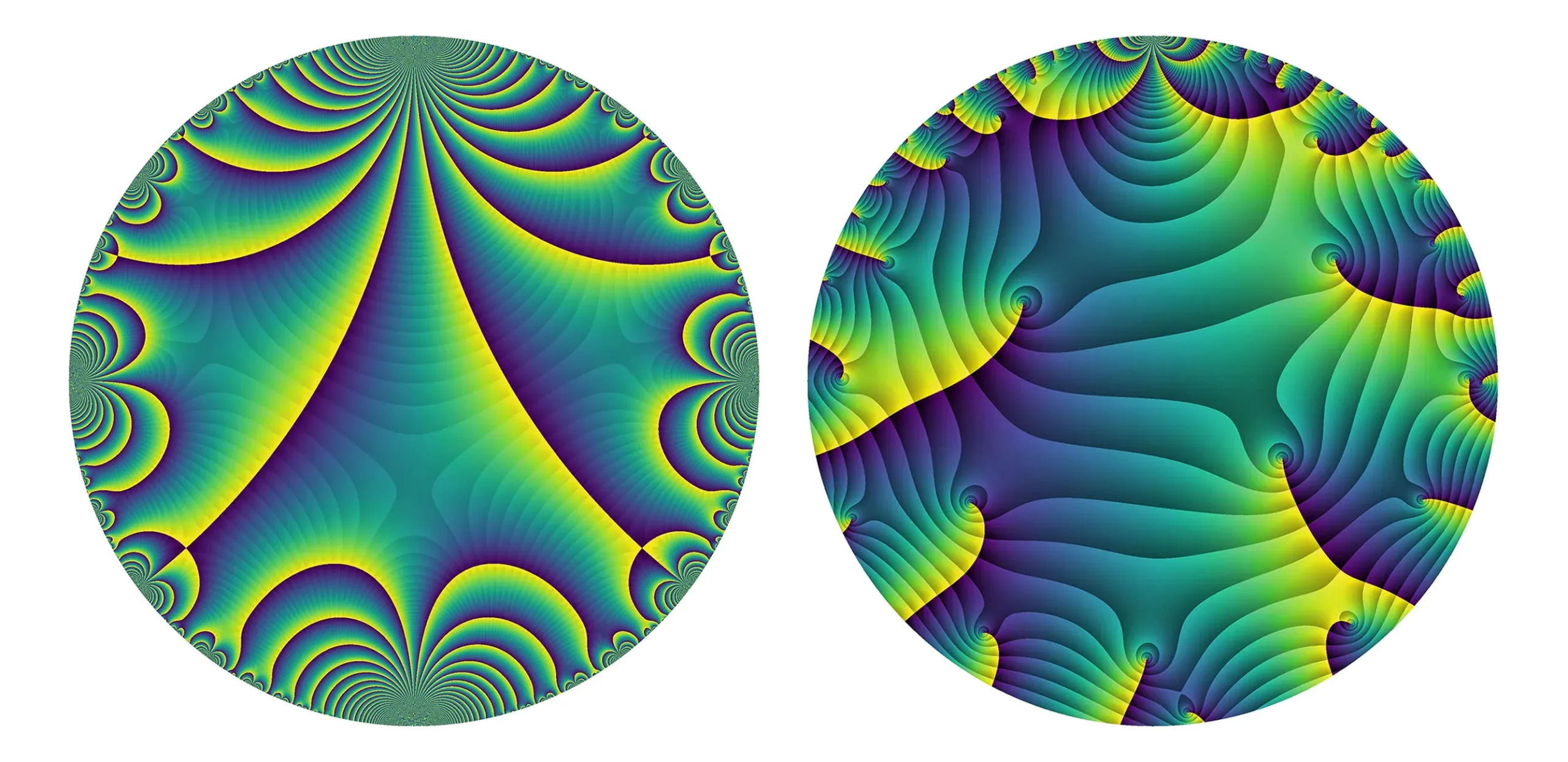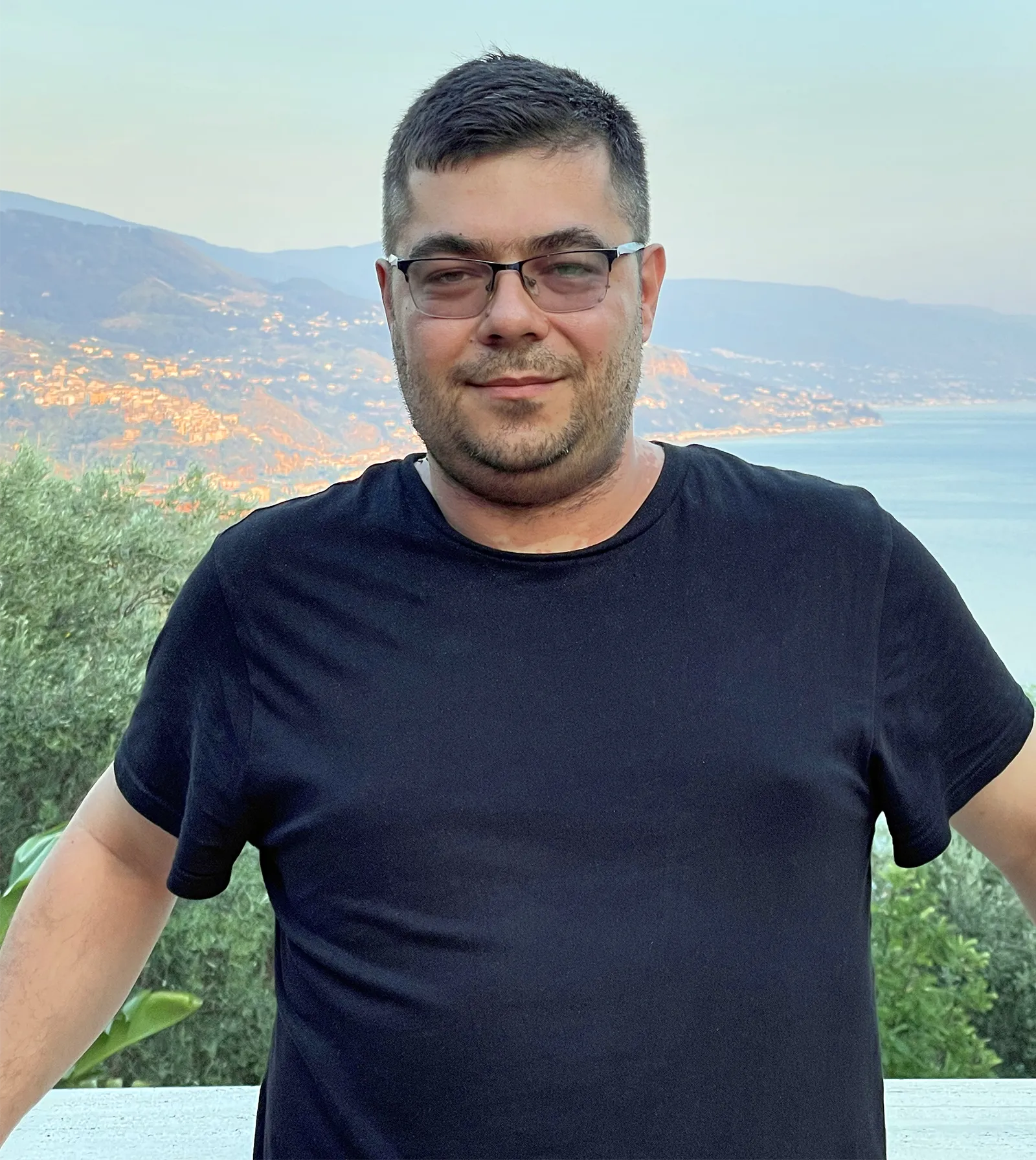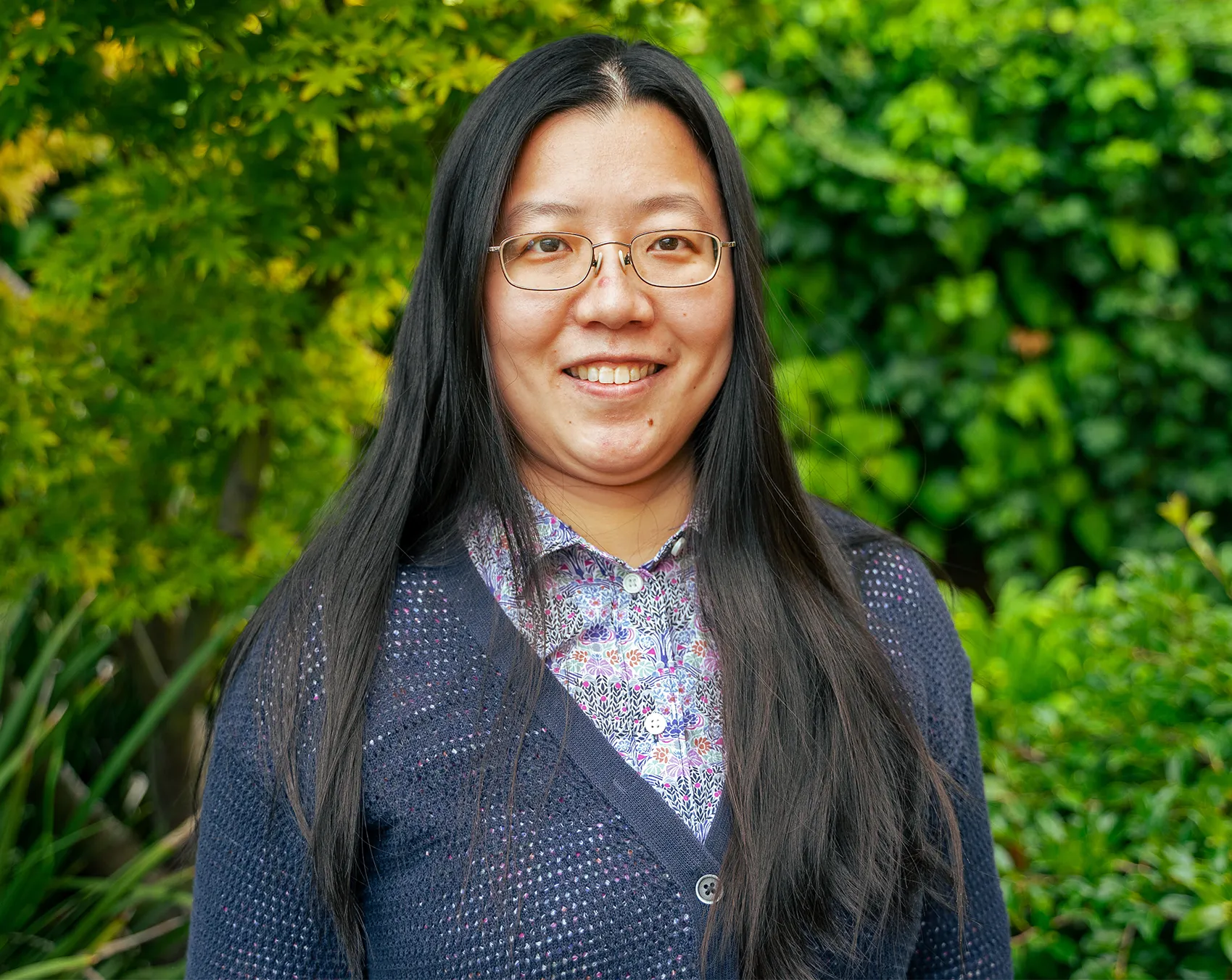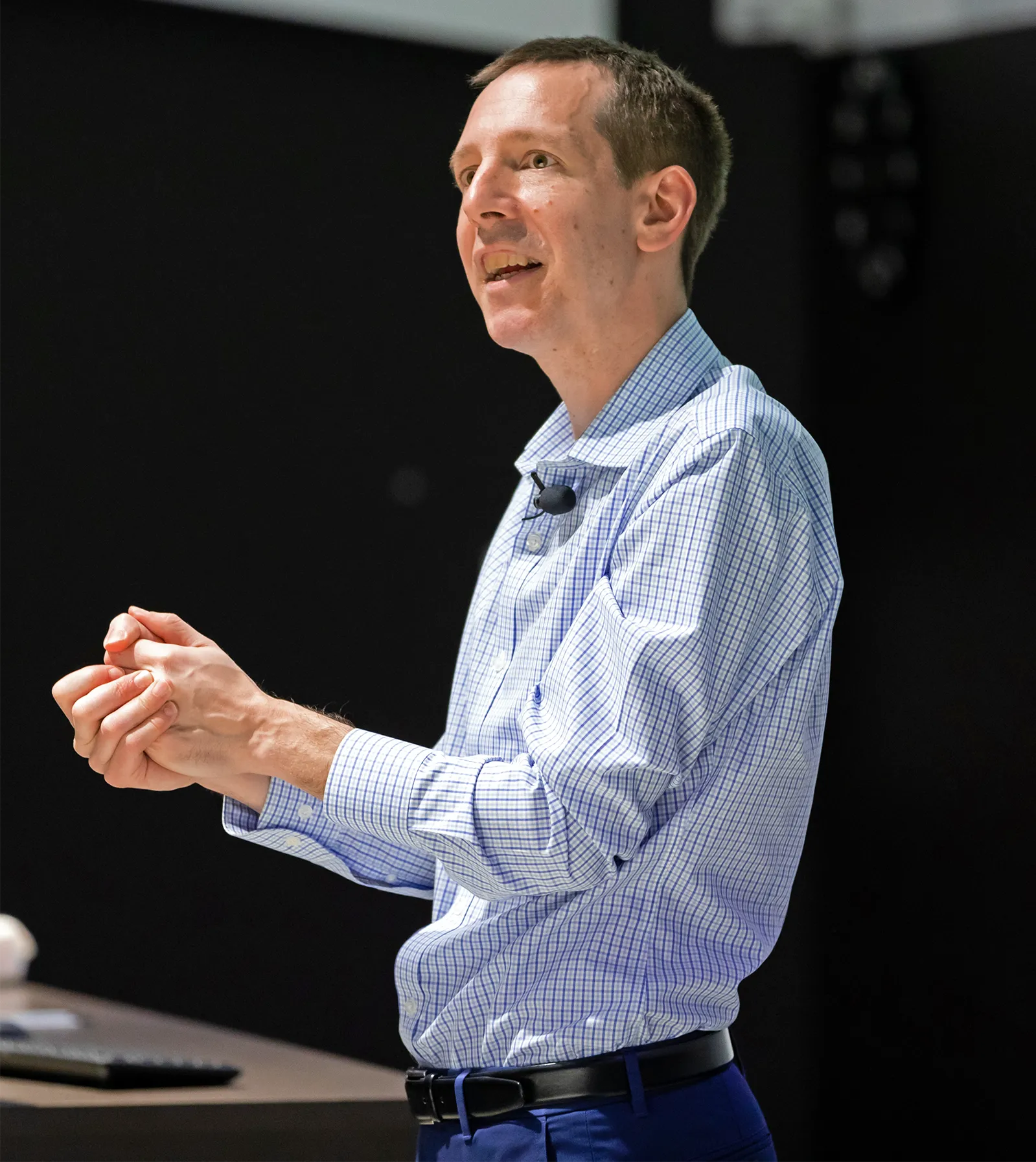New Proof Distinguishes Mysterious and Powerful ‘Modular Forms’
Introduction
In a new proof, a long-neglected mathematical object has finally gotten its moment in the spotlight.
At first glance, modular forms — functions whose abundant symmetries have intrigued mathematicians for centuries — seem to have garnered more than enough attention. They crop up in all sorts of problems: They were a key ingredient in Andrew Wiles’ 1994 proof of Fermat’s Last Theorem, which resolved one of the biggest open questions in number theory. They play a central role in the Langlands program, an ongoing effort to develop “a grand unified theory of mathematics.” They’ve even been used to study models in string theory and quantum physics.
But the modular forms that arise in these contexts are of a special type. So-called “congruence” modular forms boast additional structure that makes them easier to study. But more general “noncongruence” modular forms greatly outnumber their friendly congruence counterparts. “If you take a random modular form, with probability 1 it’s noncongruence,” said Cameron Franc, a mathematician at McMaster University in Canada. “Unless you have a really good reason to encounter a congruence modular form, you would not expect to. They’re very rare.”
And yet mathematicians know very little about noncongruence modular forms, despite their ubiquity. “They are completely mysterious,” said Anthony Scholl, a mathematician at the University of Cambridge. Not only is it difficult to make all-encompassing statements about such a general class of functions, but the tools developed to study modular forms break down in the noncongruence case. This has left mathematicians unsure about what they should even be trying to prove.
One major conjecture about noncongruence modular forms has long stood out, however: a solitary, unsteady signpost in the desert.
In 1968, the mathematicians Oliver Atkin and Peter Swinnerton-Dyer noticed that noncongruence modular forms seemed to have a particularly conspicuous property that distinguished them from congruence modular forms. That there should be such a blatant way to tell the two apart “is really pretty astonishing,” said Geoffrey Mason, a mathematician at the University of California, Santa Cruz. Congruence and noncongruence modular forms are very different, because noncongruence modular forms lack symmetries that congruence modular forms have. But these differences, though important, can be subtle and difficult to detect.
Here, suddenly, was stark evidence of these differences, made apparent.
Atkin and Swinnerton-Dyer’s observation later became known as the “unbounded denominators” conjecture. If true, it would allow mathematicians to secure their first foothold in the largely unexplored realm of noncongruence objects. And by providing an easy way to recognize which class a given modular form belonged to, the conjecture could also put a major program in theoretical physics — one aimed at understanding models of particle interactions called conformal field theories — on firmer mathematical ground.
But for more than 50 years, no one could prove it. Finally, in late 2021, a trio of mathematicians succeeded. Their proof seemed to come out of nowhere, employing techniques no one had expected to see in this area of study. Mathematicians and physicists are now starting to explore the consequences of that work.
Symmetry and Structure
Noncongruence modular forms weren’t always relegated to the margins.
In the 19th century, mathematicians were just starting to develop a theory of modular forms. This was the name given to a particular kind of highly symmetric function — one that lives in a domain known as the upper half of the complex plane.
The complex plane is a way of graphing complex numbers, which have two parts: real and imaginary. A modular form takes as its input complex numbers whose imaginary part is positive, corresponding to the upper half of the plane. (The upper half-plane can be easily mapped to the interior of a unit disk; modular forms are often depicted using this mapping.)

Congruence modular forms (left) have additional structure that noncongruence modular forms (right) lack.
David Lowry-Duda for Quanta Magazine
The many symmetries of modular forms are defined in terms of special collections, or “groups,” of 2-by-2 matrices — square arrays of four numbers. In modular forms, those four numbers are always integers. Crucially, a number associated with the matrix that determines some of its properties — called the determinant — must be 1.
There are infinitely many such sets of matrices. In some groups, the matrices can be described by relatively straightforward rules. For example, in all the matrices, the top right and bottom left entries might be even, while the other two entries are odd. Or perhaps the top right and bottom left entries are divisible by 11, while the other two entries are both 1 more than a multiple of 11.
The groups that can be defined by these kinds of relations — and the modular forms associated with such groups — are the much-studied congruence ones.
But they’re like needles in a haystack: Most collections of 2-by-2 matrices can’t be characterized by nice rules in this way, making them and their associated modular forms noncongruence.
It wasn’t until the late 1930s — around the start of World War II — that the study of congruence modular forms started to eclipse the study of noncongruence ones. That’s when the German mathematician Erich Hecke developed a toolbox that would allow him to pin down many properties of modular forms and associate them with other important mathematical objects.
Hecke’s methods only worked for congruence groups and their modular forms. Noncongruence groups lacked the extra structure that made Hecke’s toolbox effective. “This thing that you have in the congruence world goes out the door when you move to the noncongruence world,” Franc said.
And so it seemed that noncongruence modular forms were fated to always be overlooked. That’s not to say that they didn’t have any sort of special structure of their own, lurking just beneath the surface. As Swinnerton-Dyer’s collaborator Bryan Birch once wrote, “Though the structure is more mysterious it seems to be almost as rich.” But when it came to accessing that structure, mathematicians were at a loss. They didn’t even know where to start.
Enter Atkin and Swinnerton-Dyer.
A Tidy Criterion
The two mathematicians wanted to know more about noncongruence modular forms, and whatever secrets they might be hiding.
“That’s always the way mathematics progresses,” said Winnie Li, a mathematician at Pennsylvania State University. “You study things with very special properties and more structure. Then you go to generalize it, to try to understand which properties carry over and which don’t.”
To study a given modular form, mathematicians often represent it as an infinite sum called a q-expansion (a special kind of power series), then analyze the coefficients of that expansion. It was already known that if a given modular form is congruence, then the coefficients have denominators that never get larger than some fixed value.
In the 1960s, Atkin and Swinnerton-Dyer computed the q-expansions for scores and scores of modular forms. As they did so, they noticed that if a modular form was noncongruence, the denominators in its associated sequence kept growing without bound. “They could actually say something about these mysterious noncongruence forms,” said Yunqing Tang, a mathematician at the University of California, Berkeley.

On January 1, 2021, Vesselin Dimitrov, a mathematician at the Institute for Advanced Study, emailed two colleagues about “a wishful thought”: He wanted to apply the techniques they’d been working on to solve a completely unrelated problem, the unbounded denominators conjecture.
Courtesy of Vesselin Dimitrov
Could it actually be this easy to tell the two types of modular forms apart?
The mathematicians mentioned their observation at a conference in California in 1968, suggesting that unbounded denominators might be a universal hallmark of noncongruence modular forms. The conjecture was “very striking,” said John Voight, a mathematician at Dartmouth College. “It gives us a tidy criterion to decide if a modular form belongs to a congruence group or not” — a very convenient litmus test for number theorists to have at their disposal, and something that in other contexts might be difficult to detect.
“It’s almost too good to be true,” he added. “One doesn’t really expect that kind of miracle.”
Indeed, no one could prove the unbounded denominators conjecture. Li and a handful of others were able to show it was true for specific families of noncongruence modular forms, but mathematicians had no idea how to tackle the general statement.
Then in September 2021, Tang, along with Frank Calegari of the University of Chicago and Vesselin Dimitrov of the Institute for Advanced Study, posted a 50-page proof. “It was amazing and really unexpected,” Franc said. “It felt like the community hadn’t had any ideas for how to approach this problem.”
The authors hope their paper is the first step toward developing that signpost in the desert into a full-fledged road network. “We make our modest contribution to this part of number theory by supplying the answer to its easiest question,” Dimitrov said.
Back to Old Ways
Calegari, Dimitrov and Tang didn’t set out to solve the unbounded denominators conjecture. In late 2019, they were hoping to show that a certain number (a value of an analogue to the Riemann zeta function) was irrational — that, like the square root of 2, it cannot be written as a fraction. (Their ultimate goal is to prove that this number and others like it are transcendental, meaning that, as with the numbers π and e, they cannot be written as the solution to a polynomial equation with integer coefficients.)
On its face, this problem is entirely unrelated. But on January 1, 2021, Dimitrov rang in the new year with an email to the others in which he described “a wishful thought”: Perhaps the techniques they had been developing over the previous year could be repurposed to prove the unbounded denominators conjecture.
They gave it a shot. Within seven months, they had their proof.

After proving the unbounded denominators conjecture, Yunqing Tang, a mathematician at the University of California, Berkeley, is continuing to work with her two coauthors on the questions that first inspired the proof. “We’re trying to finish what we started,” she said.
Courtesy of Yunqing Tang
First, they considered two spaces: the space of all modular forms with bounded denominators, and the space of all congruence modular forms. According to the unbounded denominators conjecture, those two spaces should be identical. Since the spaces satisfied certain properties, the mathematicians only had to show that they were the same size. Doing so would automatically imply their equivalence.
Calegari, Dimitrov and Tang could calculate the size of the second space relatively easily, obtaining a sort of rough count of congruence modular forms. But it was very difficult to get a size estimate of the first space. They had to combine a lot of different techniques — including ones from transcendental number theory.
Using those methods, they showed that the space of modular forms with bounded denominators could be at most a certain size. That maximum size was a bit bigger than the size of the space of congruence modular forms. Still, this step turned out to “really be the heart of the proof,” said Jean-Benoît Bost, a mathematician at Paris-Saclay University. “You need a lot of fortitude to do that.” (Calegari, Dimitrov and Tang proved this bound on the size of the space in a handful of different ways, potentially giving their techniques much broader applications.)
“It’s very, very classical, beautiful mathematics, with a flavor of the 19th century,” said Javier Fresán, a mathematician at the École Polytechnique in France.
The trio then needed to close the gap between the two spaces. Doing so would establish that any modular form with bounded denominators had to be congruence.
So they assumed the opposite: that there exists a noncongruence modular form with bounded denominators. By definition, it would live in the gap that Calegari, Dimitrov and Tang were trying to close. The three then showed that the existence of this noncongruence modular form automatically implied the existence of lots of other noncongruence modular forms with bounded denominators. It was as if a whole forest had grown from that single seed.
But they had already established the maximum size of the gap — and it was too small to fit that many noncongruence forms.
Which meant that even one such form couldn’t exist. They’d proved Atkin and Swinnerton-Dyer’s decades-old conjecture.
Mathematicians find the techniques used in the work even more intriguing than the result itself. “These ideas have never been used before in studying the arithmetic of modular forms,” Scholl said.
As Voight explains, though the study of modular forms started out as part of the field of complex analysis, current work has been the purview of number theory and algebraic geometry. The new paper, he said, marks a return to complex analysis: “It’s a refreshingly old perspective.”
A Search for New Theories
Mathematicians aren’t the only ones excited about the unbounded denominators conjecture. It also makes an appearance in theoretical physics.
In the 1970s, another story was unfolding in parallel to the one begun by Atkin and Swinnerton-Dyer. Mathematicians had noticed a strange connection between an object called the monster group and a modular form called the j-function. The coefficients of the j-function precisely reflected certain properties of the monster group.
Later research revealed that this connection was due to the fact that both the group and the modular form were related to an important model of particle interactions called a two-dimensional conformal field theory.
But the conformal field theory that linked the monster group to the j-function was just one example of an infinite number of conformal field theories. And while these theories don’t describe the universe we live in, understanding them can yield new insights into how more realistic quantum field theories might behave.
And so physicists have continued to study conformal field theories by looking at their associated modular forms. (In this context, physicists use a more general notion of a modular form, called a vector-valued modular form.)
To get a handle on what’s going on with a particular conformal field theory, you have to show that its modular form is congruence, said Michael Tuite, a mathematician and theoretical physicist at the University of Galway in Ireland. You can then start to describe conformal field theories, and even discover new ones you didn’t know to look for. This is particularly crucial for an ongoing effort to classify all conformal field theories — a project that physicists have dubbed the modular bootstrap.
“Once you know it’s a congruence modular form, that enables you to make enormous strides in this program,” Mason said.
Physicists developed a framework that allows them to assume this congruence property for the modular forms they’re studying. But that’s not the same as having a rigorous mathematical proof — and while other mathematicians were later able to provide such a proof, their argument only worked in certain settings. It also involved “a very tortuous, convoluted path” toward congruence, according to Mason, though he also pointed out that this convoluted path yielded important insights.
Calegari, Dimitrov and Tang’s proof of the unbounded denominators conjecture cuts through all that. That’s because, as it turns out, the modular forms associated to conformal field theories always have integer coefficients. By definition, integers have a denominator of 1, meaning their denominators are always bounded. And since the unbounded denominators conjecture states that bounded denominators are associated only with congruence modular forms, there’s no longer a need to make assumptions. “You don’t even need to know anything about [conformal field theories],” Tang said. The new proof automatically delivers congruence for all these cases — for free.

Frank Calegari, a mathematician at the University of Chicago, studies modular forms and related mathematical objects.
Jayne Ion
“It’s something that’s been in the air for decades,” Bost said. Now it’s finally resolved.
“It really is a miracle,” Mason said. “This just follows miraculously from the fact that these sequences are integers.”
He’s already started applying the result in his own work. “Ever since the day that paper appeared, I’ve been making use of it,” he said. “It provides a very welcome shortcut to results that I want to resolve. …It’s cutting out a huge amount of potential work that I couldn’t see my way through.”
It also puts the modular bootstrap program and other results on stronger mathematical footing. “This is going to allow mathematicians to re-prove [previous] results, or believe them,” Mason said.
“I think it’s really going to have an impact, especially on the mathematics side, just to really, really tie things down, to understand exactly what’s going on,” Tuite said.
Mathematical Transcendence
In the year since they posted their proof, Calegari, Dimitrov and Tang have continued their collaboration. They’ve now returned to the types of problems in transcendental number theory that originally sparked their interest in the conjecture. “We’re trying to finish what we started,” Tang said. In fact, they’ve already used their techniques to prove that several numbers of interest are irrational.
“They’re really pushing the [method] to the limit,” Fresán said. “I’m really very excited about this.”
These methods might also be applicable to other problems in number theory.
Techniques aside, the resolution of the unbounded denominators conjecture marks one of the first big milestones in the effort to gain a better understanding of noncongruence modular forms. “This is an amazing achievement, that we can make some progress on noncongruence forms in this way,” Franc said. “I’m excited for the next 10, 20 years, to see what happens.”
Li, Voight and others are already starting to look for patterns in the kinds of numbers that show up in the denominators of these mysterious modular forms. They hope that in doing so, they can find hints of deeper structure.
“This unbounded denominators conjecture was just the beginning,” Li said.




